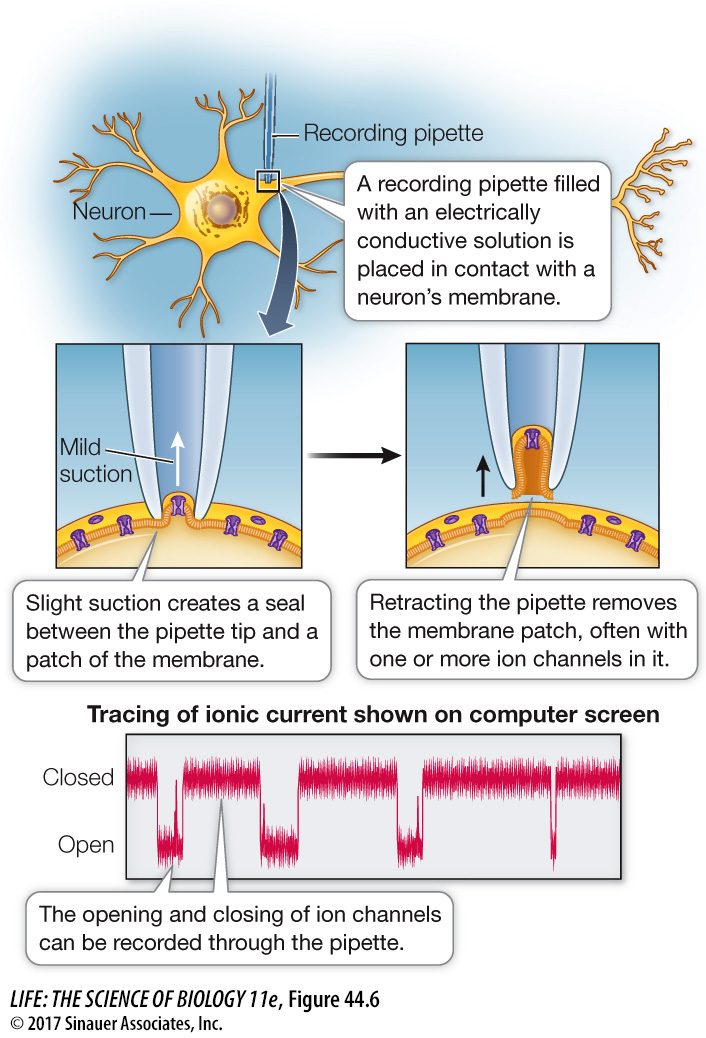Ion channels and their properties can be studied directly
Because Hodgkin and Huxley were working long before there were laboratory techniques enabling the investigation of ion channels, they could only hypothesize ion channel properties. These hypotheses could not be tested until the late 1970s, when B. Sakmann and E. Neher developed a technique called patch clamping, for which they shared the Nobel Prize in 1991. Patch clamping, described in Figure 44.6, is widely used by neurobiologists, enabling them to record in real time the tiny electric currents caused by the openings and closings of single ion channels.
research tools

Figure 44.6 Patch Clamping The patch clamp electrode is a glass micropipette with a polished tip and filled with an electrically conductive solution that has the same composition as extracellular fluids. When this pipette/electrode is positioned against the membrane of a cell and slight suction is applied, a seal forms. If a single ion channel (or a few ion channels) are within the patch of membrane bounded by the seal, the openings and closings of individual channels can be recorded by the electrode. If the pipette is retracted, it can tear the patched membrane away from the cell, and the activities of the ion channels in the patch can continue to be recorded.